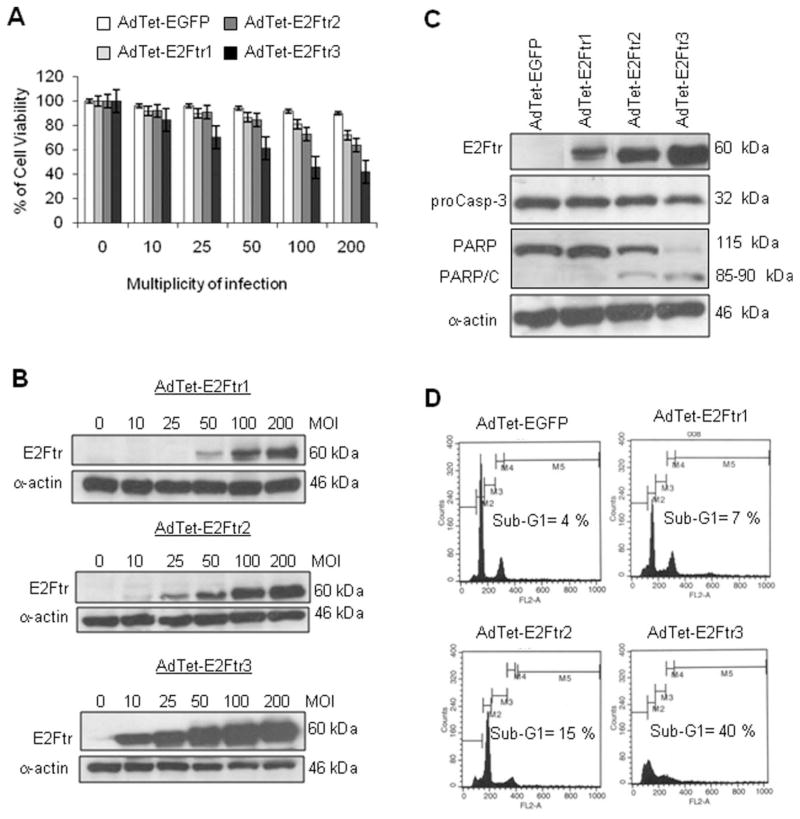Figure 2.
Three adenovirus (Ad) vectors that expressed the truncated form of the E2F-1 gene (E2Ftr) were evaluated for their ability to induce melanoma cell killing and apoptosis. SK-MEL-2 cells were infected with Ad vectors that expressed E2Ftr under regulation of the tetracycline (Tet)-off system (AdTet-E2Ftr1, AdTet-E2Ftr2, and AdTet-E2Ftr3 or AdTet that expressed the reporter-enhanced green fluorescent protein [AdTet-EGFP]) at multiplicities of infection (MOIs) of 0, 10, 25, 50, 100, or 200. Three days after infection, cells were used for 3-(4,5-dimethylthiazol-2-yl)-2,5-diphenyltetrazolium (MTT) and Western blot assays. (A) The MTT assay was used to determine cell survival. Each point represents the mean of 3 independent experiments (±standard deviation [bars]). (B) Monoclonal antibody (MoAb) antihuman E2F-1 was used to detect E2Ftr. SK-MEL-2 cells were infected with the vectors mentioned above at an MOI of 100. Three days after infection, the cells were used for a Western blot assay and cell cycle analysis. (C) MoAb antihuman poly (ADP-ribose) polymerase (PARP) was used to detect PARP, and MoAb antihuman caspase-3/CPP3 was used to detect caspase-3 (proCasp-3). α-Actin was used to demonstrate equal loading for each lane. PARP/C indicates PARP cleavage. (D) For cell cycle analysis, cells were stained with propidium iodide and analyzed as describe in the text (see Materials and Methods).

